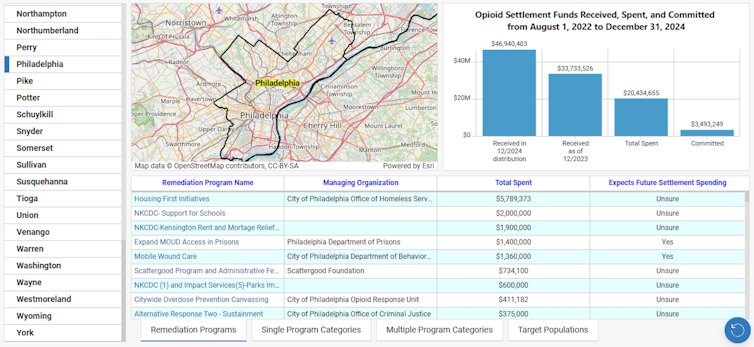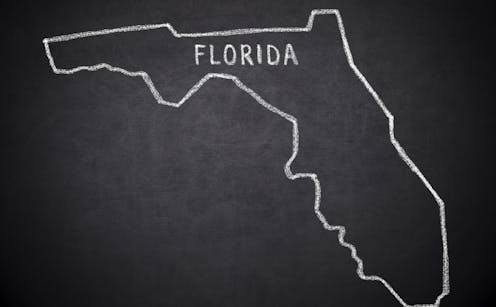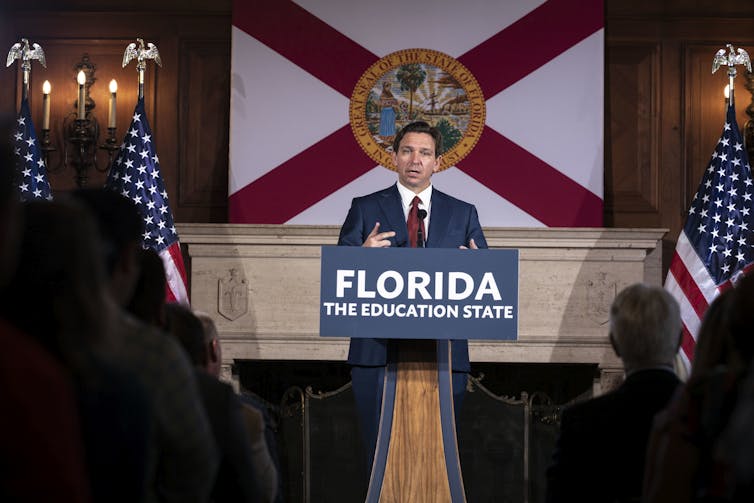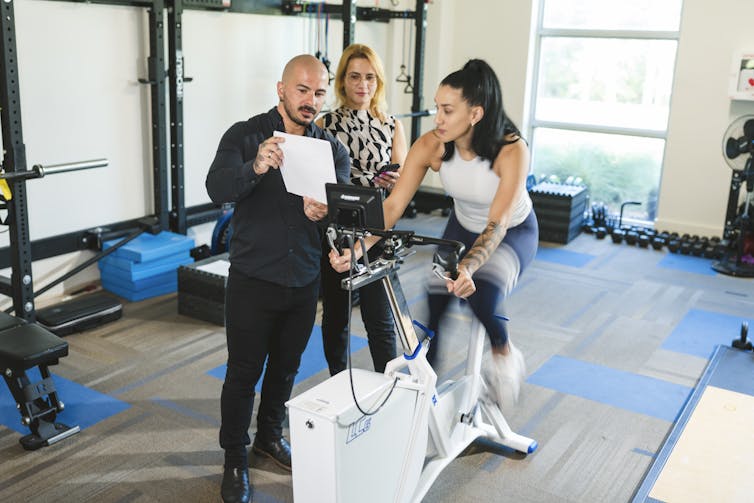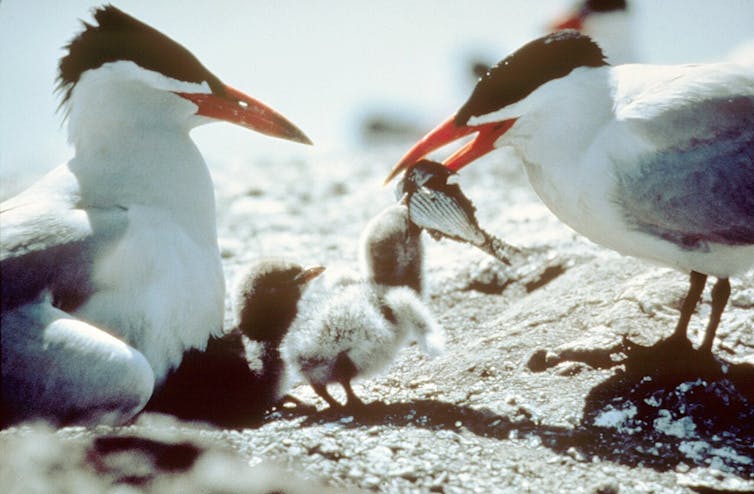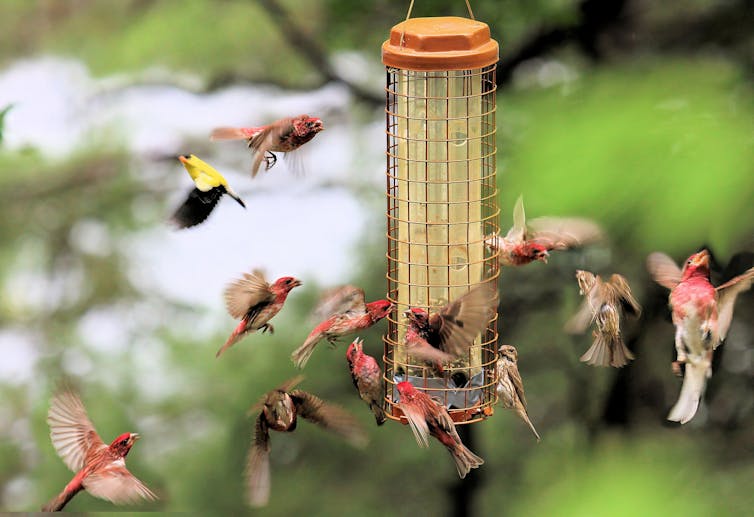Source: The Conversation – USA – By Aaron Buss, Associate Professor of Psychology, University of Tennessee

Parents of young children probably recognize the hectic mornings filled with reminding the kids to eat breakfast, brush their teeth and put on their shoes – and hurry up, you’re gonna be late!
Most little kids can’t manage these morning routines on their own because they lack the necessary executive function: the set of skills that affect how people make purposeful decisions that align with their goals. It’s these skills that allow you to set and pursue short-term goals, such as making breakfast, and long-term goals, such as pursuing a successful career.
Early childhood marks a period of significant development in executive function ability. Research shows that children with better executive function tend to grow up to be financially stable, healthy and productive adults. For this reason, many psychologists and educators are seeking ways to help kids develop these skills in early childhood, potentially setting them up for later success.
As important as these skills are, though, attempts to understand where they come from and how to train them have been mostly unsuccessful – until now.
We are psychologists at the University of Tennessee in the Attention, Brain and Cognition Lab, and our recent study provides new insights into how executive function develops.
Where previous attempts failed
There have been many attempts to teach children executive function, in hopes that improvements will translate to other cognitive skills. But these have largely been unsuccessful for two reasons.
First, while children in these experiments learned specific tasks, they didn’t learn skills that would translate to the real world. It’s like how studying for your ACT may make you better at taking the ACT but not necessarily better at the skills you need for your future job.
Second, on the more technical side, measuring brain activity in young children is notoriously difficult. MRIs are too restrictive – not to mention scary – to be used on children while they perform tasks.

University of Tennessee, Knoxville
New tools offer new insights
Many researchers now use a more child-friendly neuroimaging machine called functional near-infrared spectroscopy, which involves placing sensors on a child’s head – typically in the form of a lightweight cap – to track their brain function. This laser system monitors blood flow in the outer layer of the brain, known as the cortical surface. Blood flow indicates neural activity and reveals areas of the brain that are most busy.
This technology is a step in the right direction, but it’s still difficult to ensure that the sensors are placed in exactly the same way from one session to the next, and from one kid to the next. This challenge is particularly pronounced in longitudinal studies, because children’s heads grow over time.
To solve this problem, our team developed 3D-image reconstruction techniques that allow us to keep track of where brain activation is happening. With the 3D model, we are able to map and measure each child’s individual brain regions.
Our advanced analysis tools allowed us to collect multiple recordings from the same children over several years, confident the sensors were in the correct, consistent spots on their heads for each study phase.
By administering a wide range of tasks that tap into different aspects of neurocognitive function, we were able to pinpoint which regions of a child’s brain are active as they develop executive function skills.
Understanding the nature of executive function
One important aspect of executive function is the ability to filter what information is relevant for completing your goals. Based on previous executive function studies and our mathematical model of the brain’s connections, our team believes that the key is the process of what we call learning labels – that is, learning to name and sort the objects in your environment based on various categories they fit into.
Label learning allows you to move through your world finding tools you need to accomplish your goals and flexible uses for the objects around you. For instance, understanding the labels “smooth” and “concave” would help you identify a spoon. Knowing how the features of a spoon relate to other objects or processes such as “mixing,” “shoveling” or “slinging” can encourage flexible uses of the spoon, so that you recognize you can use the spoon to stir your chocolate milk, eat your cereal or even catapult a bit of breakfast onto your sibling.
So all that learning in a child’s early years of fundamentals such as color, shape and basic sounds and words is preparing them for a life where they can identify what they need to set and meet their goals, small and large.
Further, understanding how to identify and label items in your environment can help you be flexible and notice different aspects of an object when your goals change. For example, if there’s no cow’s milk available, but you know almond milk falls into the same category, you can use it as a substitute. In this way, learning labels for categories of objects lets you identify and act on goal-relevant information around you.
What we found
Using our near-infrared spectroscopy tools, we examined the brain function of 20 children during a series of tasks. We first assessed their label understanding at age 2½ by asking them simple questions about objects, such as, “Which one is red?” or “What color is this one?”
Two years later, when the children were 4½, we brought them back to the lab for an executive function task. First, they would play a few rounds of a shape-sorting game. Then the research assistant would ask them to switch to sorting the same objects by color. This task requires thinking flexibly about the objects and making different decisions about them when the rules change.
We found that brain activity differed before versus after children learned to categorize objects by shape and color. In addition, we found that children who showed stronger activation in their brain’s frontal cortex region during the simpler color and shape labeling tasks at age 2½ performed better on the complex task at 4½. We think this indicates that those children at 2½ were further along in the developmental trajectory of learning categories for objects around them, and thus had richer neurocognitive resources available at 4½ when performing the complex executive function task.
Our findings suggest that label learning extends beyond language and affects how kids can control and regulate their behavior. That is, by having ways of labeling different aspects of objects or the environment, children have ways to cognitively focus on that information in order to guide their behavior.
What’s next?
Our results open the door to finding ways to teach children executive function skills. Scientists can now try to create interventions focused on label learning and grouping objects based on their physical characteristics. Training would likely build on the sort of learning that naturally occurs during play time with caregivers, as well as via children’s books and edutainment videos.
Our team has already begun the next step in this work, examining how to facilitate these learning processes. Our goal is to develop interventions aimed at improving executive function skills in early childhood that will improve broad development outcomes as kids get older.
![]()
Aaron Buss received funding from the Eunice Kennedy Shriver National Institute of Child Health and Human Development.
Alexis McCraw does not work for, consult, own shares in or receive funding from any company or organization that would benefit from this article, and has disclosed no relevant affiliations beyond their academic appointment.
– ref. Naming and categorizing objects is part of how young kids develop executive function skills – new research – https://theconversation.com/naming-and-categorizing-objects-is-part-of-how-young-kids-develop-executive-function-skills-new-research-255943





